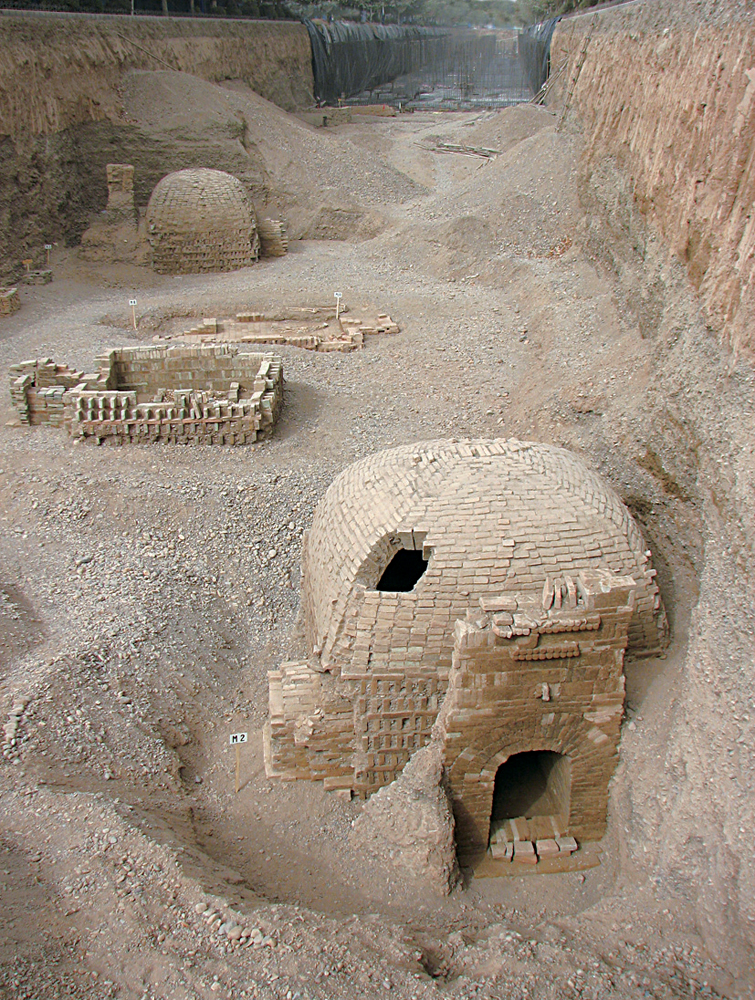1,700-Year-Old Silk Road Cemetery Contains Mythical Carvings

A cemetery dating back roughly 1,700 years has been discovered along part of the Silk Road, a series of ancient trade routes that once connected China to the Roman Empire.
The cemetery was found in the city of Kucha, which is located in present-day northwest China. Ten tombs were excavated, seven of which turned out to be large brick structures.
One tomb, dubbed "M3," contained carvings of several mythical creatures, including four that represent different seasons and parts of the heavens: the White Tiger of the West, the Vermilion Bird of the South, the Black Turtle of the North and the Azure Dragon of the East. [See photos of the ancient Silk Road cemetery]
The M3 tomb also "consists of a burial mound, ramp, sealed gate, tomb entrance, screen walls, passage, burial chamber and side chamber" the researchers wrote in a report published recently in the journal Chinese Cultural Relics.
The cemetery was first found in July 2007 and was excavated by the Xinjiang Institute of Cultural Relics and Archaeology, with assistance from local authorities. The research team, led by Zhiyong Yu, director of the Xinjiang Archaeological Institute, published the findings in Chinese in the journal Wenwu. The article was recently translated into English and published in the journal Chinese Cultural Relics.
Who was buried here?
The identity of the people buried in the cemetery is a mystery. The cemetery had been robbed in the past and no writing was found that indicates the names of those buried or their positions in life.
Sign up for the Live Science daily newsletter now
Get the world’s most fascinating discoveries delivered straight to your inbox.
The seven large brick tombs were likely constructed for people of wealth, the researchers said.
But, when the skeletal remains were analyzed, the researchers found that the tombs had been reused multiple times. Some of the tombs contain more than 10 occupants, and the "repeated multiple burials warrant further study," the researchers wrote.
City on the Silk Road
The excavators think the cemetery dates back around 1,700 years, to a time when Kucha was vital to controlling the Western Frontiers (Xiyu) of China. Since the Silk Road trade routes passed through the Western Frontiers, control of this key region was important to China’s rulers.
"In ancient times, Kucha was called Qiuci in Chinese literature. It was a powerful city-state in the oasis of the Western Frontiers" the researchers wrote.
For the dynasties that flourished in China around 1,700 years ago "the conquest and effective governance of Kucha would enable them to control all the oasis city-states in the Western Frontiers," the researchers said.
In fact, one ancient saying was, "if you have Kucha, only one percent of the states in the Western Frontiers remain unsubmissive."
Chinese Cultural Relics is a new journal that translates Chinese-language articles, originally published in the journal Wenwu, into English. The discovery of the 1,700-year-old cemetery was included in its inaugural issue.
Follow Live Science @livescience, Facebook & Google+. Original article on Live Science.

Owen Jarus is a regular contributor to Live Science who writes about archaeology and humans' past. He has also written for The Independent (UK), The Canadian Press (CP) and The Associated Press (AP), among others. Owen has a bachelor of arts degree from the University of Toronto and a journalism degree from Ryerson University.









